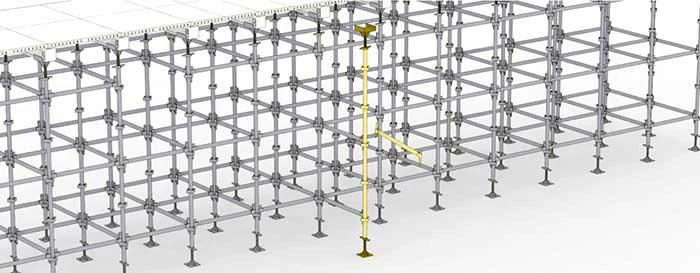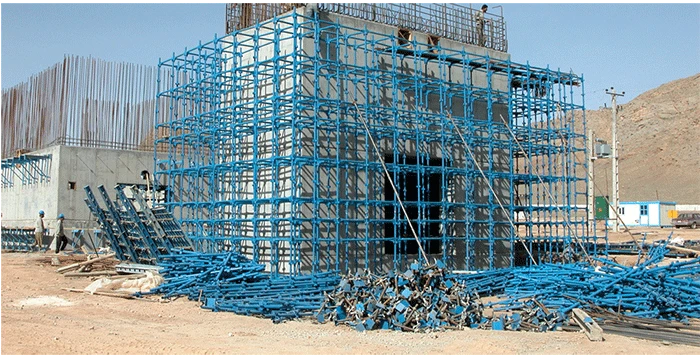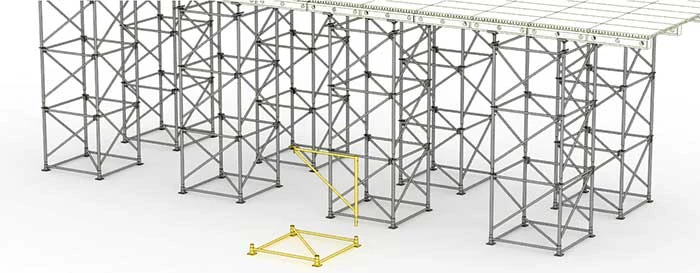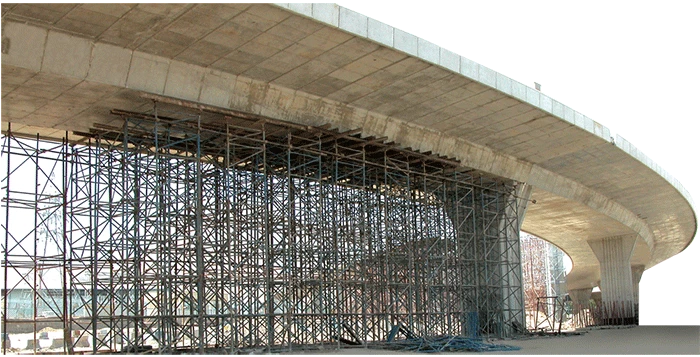MODULAR HAMMER SCAFFOLD
Tesko provides modular scaffolds in two different kinds:

Modular hammer scaffold
This type of scaffold is made of vertical and horizontal elements in different sizes and shapes. Vertical elements (vertical stands) of this type of scaffold are produced in various lengths: 1, 1.5, 2, 2.5, and 3 meters. The height of this type of scaffold can be adjusted to any height by the use of adjustable U-head screw jacks at the top and adjustable screw base jacks at the bottom of the scaffold. The horizontal elements (ledgers) can be installed simply by hammer blow and vertical elements fit inside each other and are fixed by bolt and wing nut.
The advantages of hammer scaffolding are as follow:
Easy assembling and dismantling; no need to use a spanner for connections
Can be easily expanded in plan and in height without any limitations
Can be used for facade scaffolding and also industrial equipment maintenance access scaffolding
Can tolerate the heavy weight of fresh concrete in concrete slabs
No need to hire skilled laborers. It can be assembled easily by unskilled laborers
Can be easily relocated/transported to a new location because of the lightweight parts
Can be used in arched and stepped ceilings.


Modular triangular scaffold (Omega)
This type of scaffolding is composed of triangular-shaped frames which are connected to each other by male and female connections. It is commonly used as a shoring system for beams, slabs and bridge decks. Frame height of this type of scaffold can be 50 cm, 75 cm or 100 cm for each segment. The height can be adjusted to any height by connecting different segments on top of each other and the use of adjustable U-head screw jacks at the top. The width of the frames is 120 cm and the frame section in horizontal plane can be square or triangle.
The advantages of triangular scaffolding are as follow:
Superfast assembly
No need to use a spanner for assembling or dismantling
Can tolerate the heavy weight of fresh concrete in slabs because of the diagonal members (braces)
No need for a skilled laborer as parts can be easily assembled by an unskilled laborer




